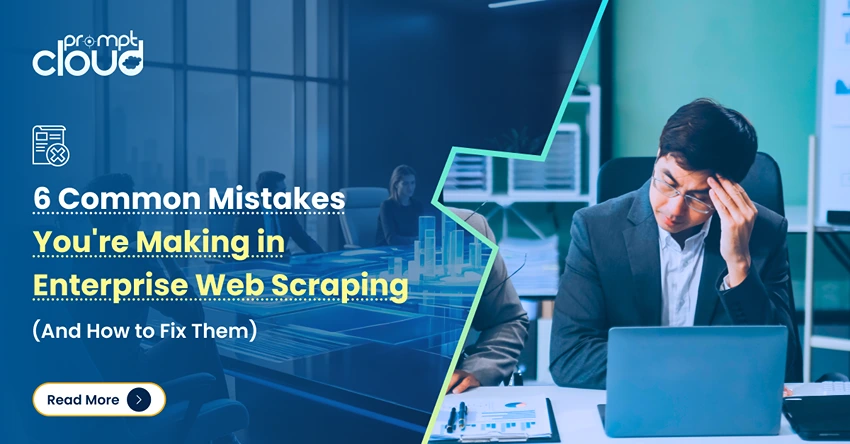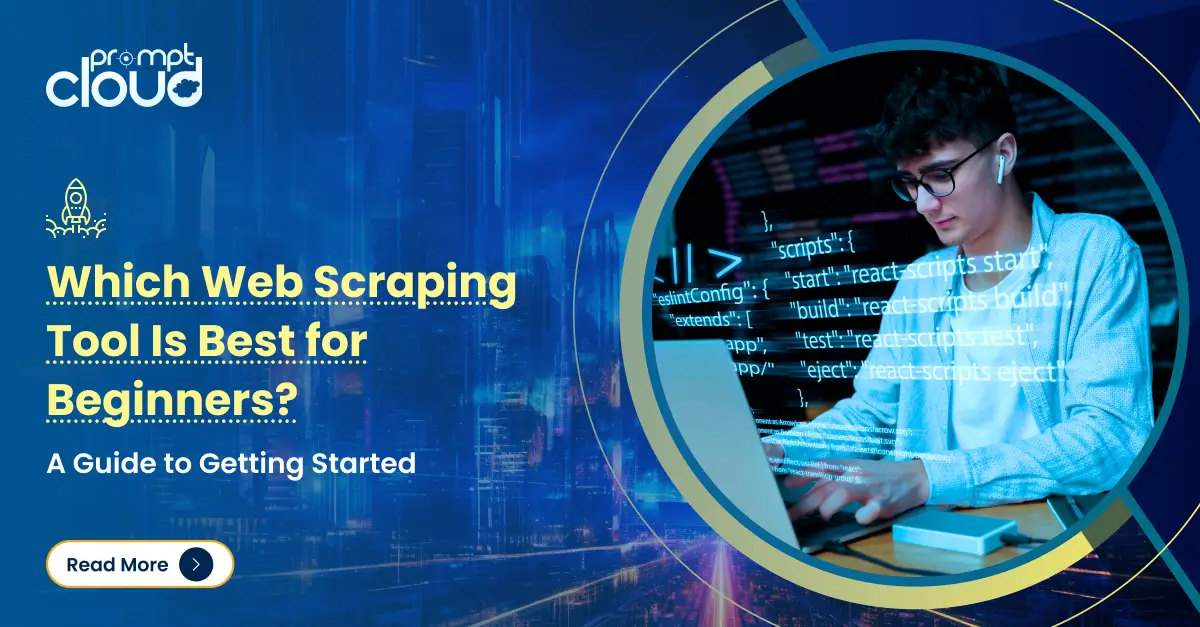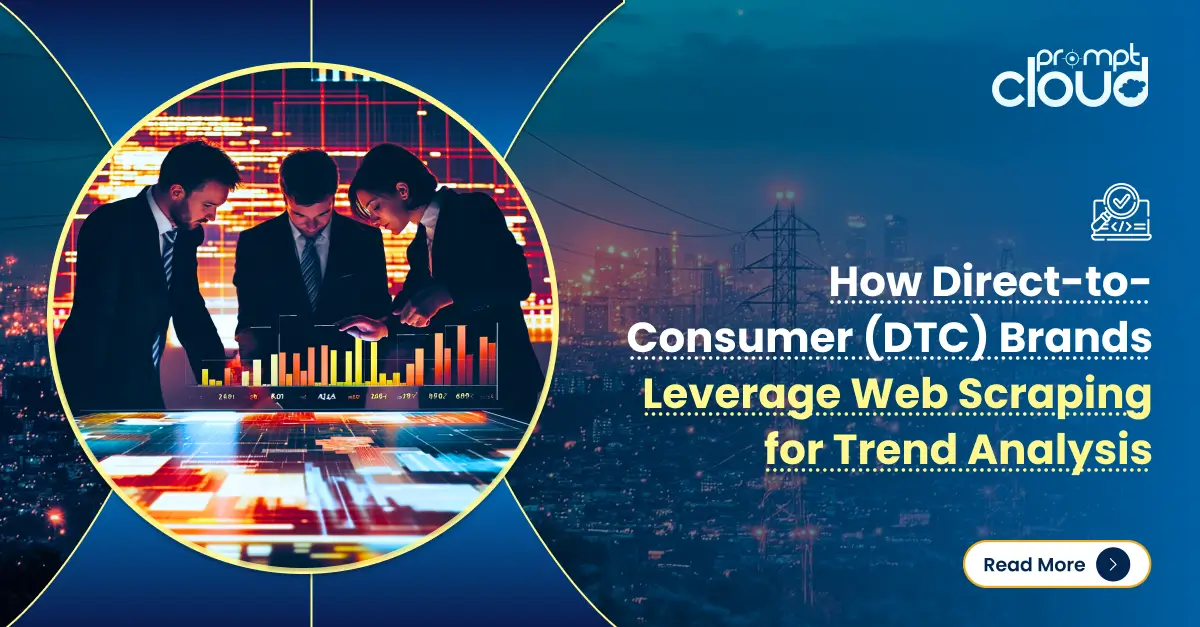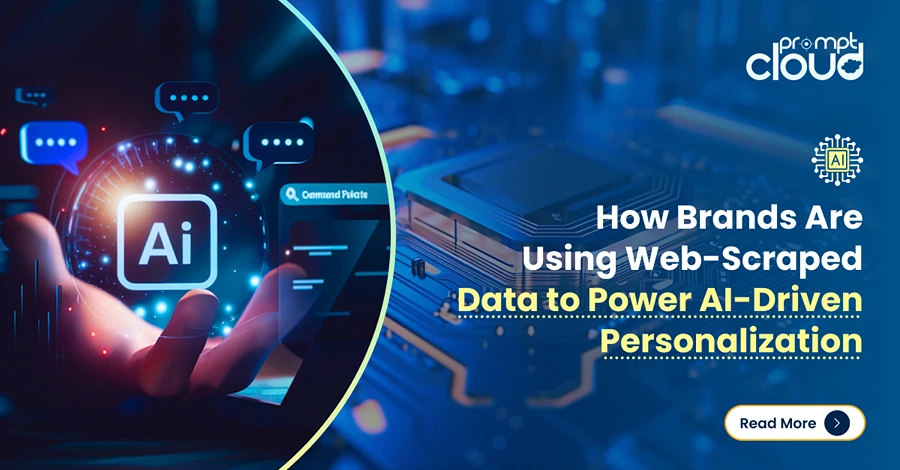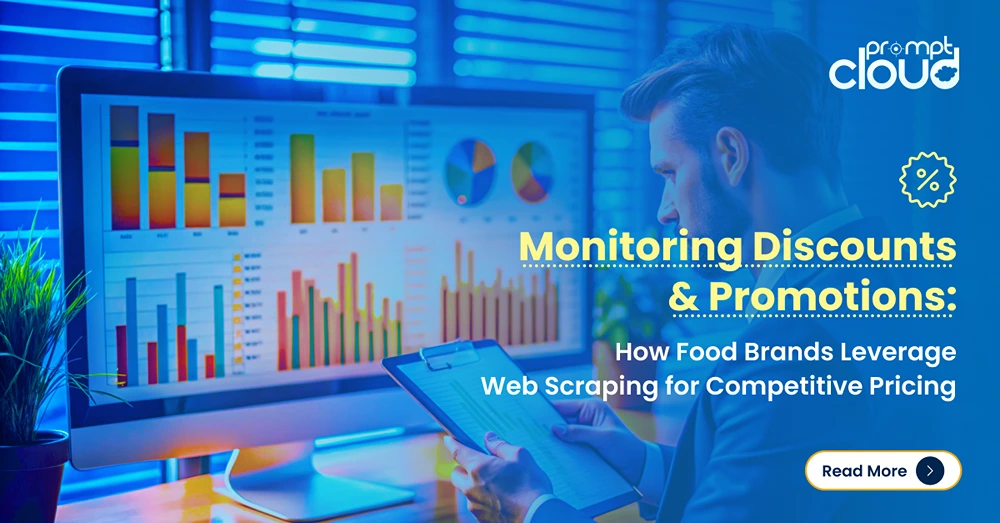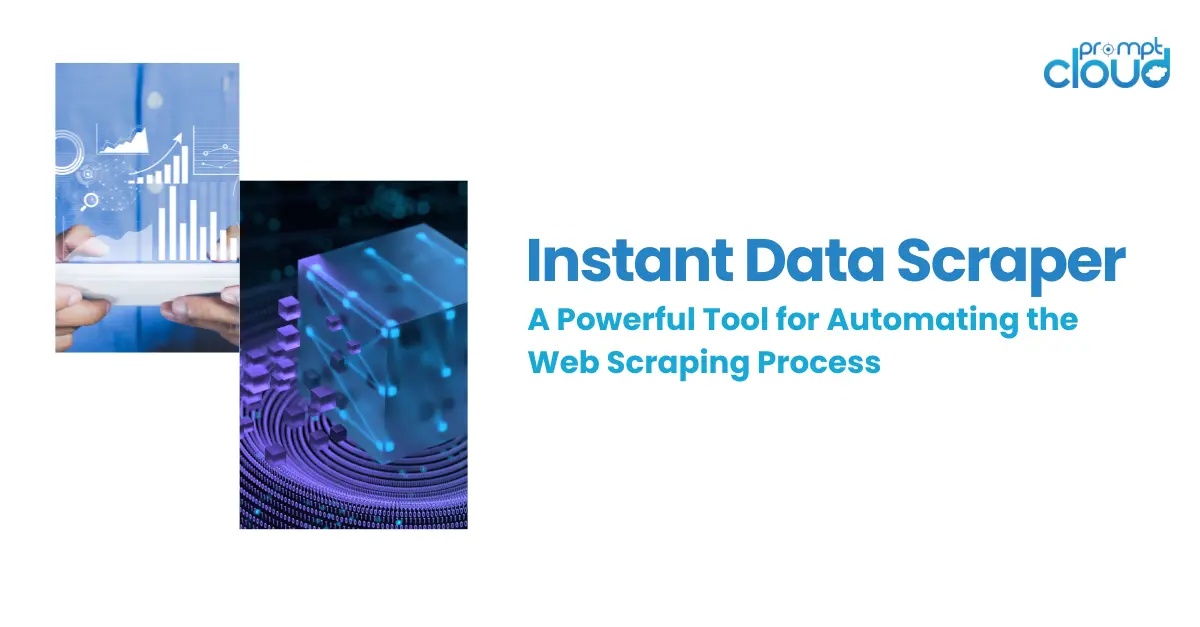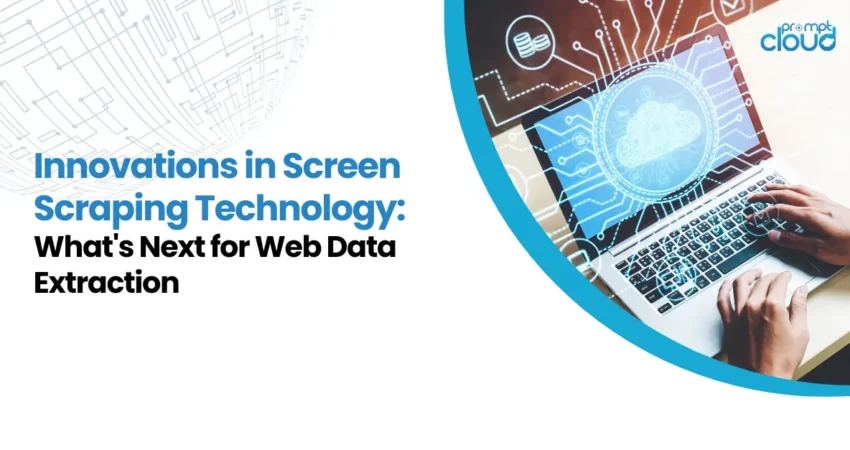
In the digital age, data is the new gold. As businesses strive to collect and analyze web data to gain competitive insights, the technology behind screen scraping or web data extraction has evolved significantly. Screen scraping, once a straightforward method of extracting information from websites, is now a sophisticated practice that leverages advanced technologies to navigate the complex web landscape.
What is a Screen Scraper
A screen scraper is a tool or software application designed to extract data from the display output of another program. Unlike traditional data extraction methods that interact with databases or APIs, screen scrapers interact with the user interface of a website or application, essentially “seeing” the screen as a human user might. They are used to capture text-based data, and sometimes images, from websites, applications, or systems that do not offer a convenient way to access the underlying data programmatically.
Source: https://research.aimultiple.com/web-scraping-vs-screen-scraping/
Screen scraping technology is particularly useful for gathering information from websites that do not provide an API or for pulling data from legacy systems without direct database access. This process involves navigating the web page, identifying the data of interest based on patterns or structures (like HTML tags), and then extracting and storing that data in a structured format for further analysis or processing. Screen scrapers can automate the collection of data from various sources quickly and efficiently, making them invaluable tools for data analysis, market research, competitive intelligence, and more.
The Evolution of Screen Scraping
Traditionally, screen scraping involved the simple extraction of data from websites. However, with the advent of dynamic websites, single-page applications (SPAs), and advanced web frameworks, the process has become increasingly complex. Modern web data extraction now requires handling JavaScript-heavy sites, bypassing anti-scraping measures, and ensuring the ethical use of data.
Innovations Driving the Future of Screen Scraping
Artificial Intelligence and Machine Learning
AI and ML are at the forefront of revolutionizing screen scraping technology. These technologies enable more intelligent data extraction, capable of understanding and interpreting the context of the data being scraped. For instance, AI-powered screen scraping tools can differentiate between relevant and irrelevant data, adapt to changes in web page layouts without manual intervention, and even identify and extract data from images and videos.
Browser Fingerprinting Avoidance Techniques
As websites deploy sophisticated methods to detect and block scrapers, the next generation of screen scraping technologies is focusing on evading detection. This includes advanced browser fingerprinting avoidance techniques, which allow scrapers to mimic human browsing behavior more closely, reducing the likelihood of being blocked.
Cloud-based Scraping Solutions
The shift towards cloud-based scraping solutions is making web data extraction more scalable and accessible. Cloud platforms offer the advantage of high scalability, allowing businesses to extract vast amounts of data without investing in extensive hardware infrastructure. Moreover, these platforms can provide more robust data security and privacy measures, essential in today’s data-sensitive environment.
Legal and Ethical Scraping Practices
As the legal landscape around data privacy continues to evolve, with regulations like GDPR and CCPA setting the standard, ethical scraping practices have become paramount. Future advancements in screen scraping technology will increasingly incorporate features that ensure compliance with legal standards, such as respecting robots.txt files, obtaining consent for data extraction, and anonymizing personal data.
The Road Ahead
Looking forward, the integration of advanced technologies like AI and ML, combined with a strong emphasis on ethical and legal compliance, will define the next era of screen scraping. Innovations will likely focus on enhancing accuracy, speed, and the ability to extract data from increasingly complex web environments, all while maintaining the highest standards of privacy and security.
As we continue to navigate the ever-evolving landscape of web data extraction, it’s clear that the innovations in screen scraping technology will play a pivotal role in shaping the future of business intelligence and data analysis. By staying abreast of these trends and embracing the latest advancements, businesses can unlock new opportunities for growth and competitive advantage.
Unlock the Full Potential of Web Data with PromptCloud! Dive deep into the ocean of online information and surface with valuable insights that can propel your business forward. Whether it’s market research, competitive analysis, or personalized data feeds, PromptCloud’s cutting-edge data extraction services are here to power your decision-making with accuracy and speed. Don’t let critical data slip through your fingers. Contact us today to learn how our bespoke web scraping solutions can transform your data strategy and give you the competitive edge you need in today’s fast-paced digital landscape. Start your data journey with PromptCloud now!
Frequently Asked Questions (FAQs)
What Does Screen Scraping Do?
Screen scraping is a technique used to extract data from the display output of another program. In essence, it reads the digital elements visible on a screen, such as a website or application interface, and translates them into usable data. This process is particularly useful when dealing with sources that do not provide an API for direct data access. By simulating the actions of a human user, screen scraping can gather information from various web pages or applications, making it an invaluable tool for competitive intelligence, market research, and automating data entry tasks. It enables businesses and developers to capture and repurpose information that is otherwise only visually available, facilitating data-driven strategies and decision-making.
Is screen scraping legal?
The legality of screen scraping depends on several factors, including the method used, the type of data being scraped, how the data is used, and the jurisdiction under which the scraping activity falls. Here are the key considerations:
- Terms of Service (ToS) Compliance: Many websites include clauses in their Terms of Service that specifically prohibit screen scraping. Non-compliance with a website’s ToS can potentially lead to legal actions against the scraper.
- Copyright Laws: Extracting data from a website without permission might infringe on copyright laws, especially if the content is copyrighted and the scraper redistributes or repurposes it without authorization.
- Data Protection Regulations: In regions with stringent data protection laws (like the GDPR in the European Union), scraping personal data without consent can result in legal penalties. Scraper operators must ensure they comply with relevant privacy laws.
- Computer Fraud and Abuse Act (CFAA) in the U.S.: In the United States, the CFAA has been interpreted to consider unauthorized access or exceeding authorized access to computer systems (which can include websites) as illegal. However, the application of the CFAA to screen scraping has been a subject of legal debate and varies by case.
- Breach of Contract: If there is a contractual relationship between the scraper and the website (e.g., through a user agreement), scraping in violation of this contract could lead to legal consequences.
- Public vs. Private Data: The legality of scraping can also depend on whether the data is publicly available without needing to log in or bypass any form of access control. Public data is generally considered more permissible to scrape compared to private, restricted, or personally identifiable information.
Is Screen Scraping Safe?
Screen scraping, when used responsibly and ethically, can be a powerful tool for data extraction. However, its safety and security implications are worth considering to mitigate any potential risks. Here are some factors that impact the safety of screen scraping:
- Data Security: When extracting data, especially sensitive or personal information, it’s crucial to ensure that the data is handled and stored securely to prevent unauthorized access or breaches. This includes using secure connections (such as HTTPS) for scraping activities and adhering to data protection laws.
- Website Security: Screen scraping can sometimes inadvertently affect the security of the website being scraped. High volumes of scraping requests may overload a website’s servers, akin to a Distributed Denial of Service (DDoS) attack, which can disrupt service for other users. Ethical scraping practices, such as rate limiting and respecting a site’s
robots.txtfile, help minimize these risks. - Legal Compliance: As mentioned previously, the legality of screen scraping varies, and engaging in unauthorized scraping activities can lead to legal complications. Ensuring that scraping activities are compliant with relevant laws and website terms of service is essential for safe operation.
- Malicious Code: When using third-party screen scraping tools or services, there’s a risk of encountering malicious software. It’s important to use reputable tools and maintain up-to-date security measures to protect against malware or spyware.
- Accuracy and Reliability: Screen scraping relies on the structure of the webpage at the time of scraping. Websites frequently update their layout and structure, which can break scraping scripts and lead to inaccurate data extraction. Regular monitoring and updates to scraping scripts are necessary to maintain the accuracy of the data collected.
What is screen scraping method?
The screen scraping method is a technique used to extract data from the display output of a software application, rather than obtaining it from the underlying database or API. It’s primarily employed when data is not readily accessible through more structured means. Here’s how it typically works:
- Capturing Display Output: Screen scraping involves capturing the visual elements displayed on a screen, such as a webpage or an application interface. This can be done through software that simulates human interaction with the user interface or through more advanced techniques that parse the rendered HTML on a web page.
- Data Extraction: The captured data, often in the form of text and images displayed on the screen, is then analyzed and extracted. This process can involve recognizing and interpreting the visual layout, fonts, and patterns to translate the visual data into a structured format that can be used for further analysis or processing.
- Data Processing: Once the data is extracted, it’s processed and transformed into a usable format. This might involve cleaning the data, organizing it into tables or spreadsheets, or integrating it with other data sources for analysis.
Screen scraping is particularly useful in scenarios where traditional data access methods are not available. This includes extracting information from legacy systems that lack APIs, automating data entry or extraction tasks in software without programmable interfaces, or gathering data from websites that do not offer data through an API.
However, it’s important to note that screen scraping can be technically challenging due to the need to interpret the visual presentation of data accurately. It’s also subject to legal and ethical considerations, as it involves accessing and extracting data from software and websites possibly without the explicit permission of the data owner. Additionally, screen scraping is sensitive to changes in the layout or presentation of the data source, requiring regular updates to the scraping scripts or software to maintain data accuracy and reliability.










